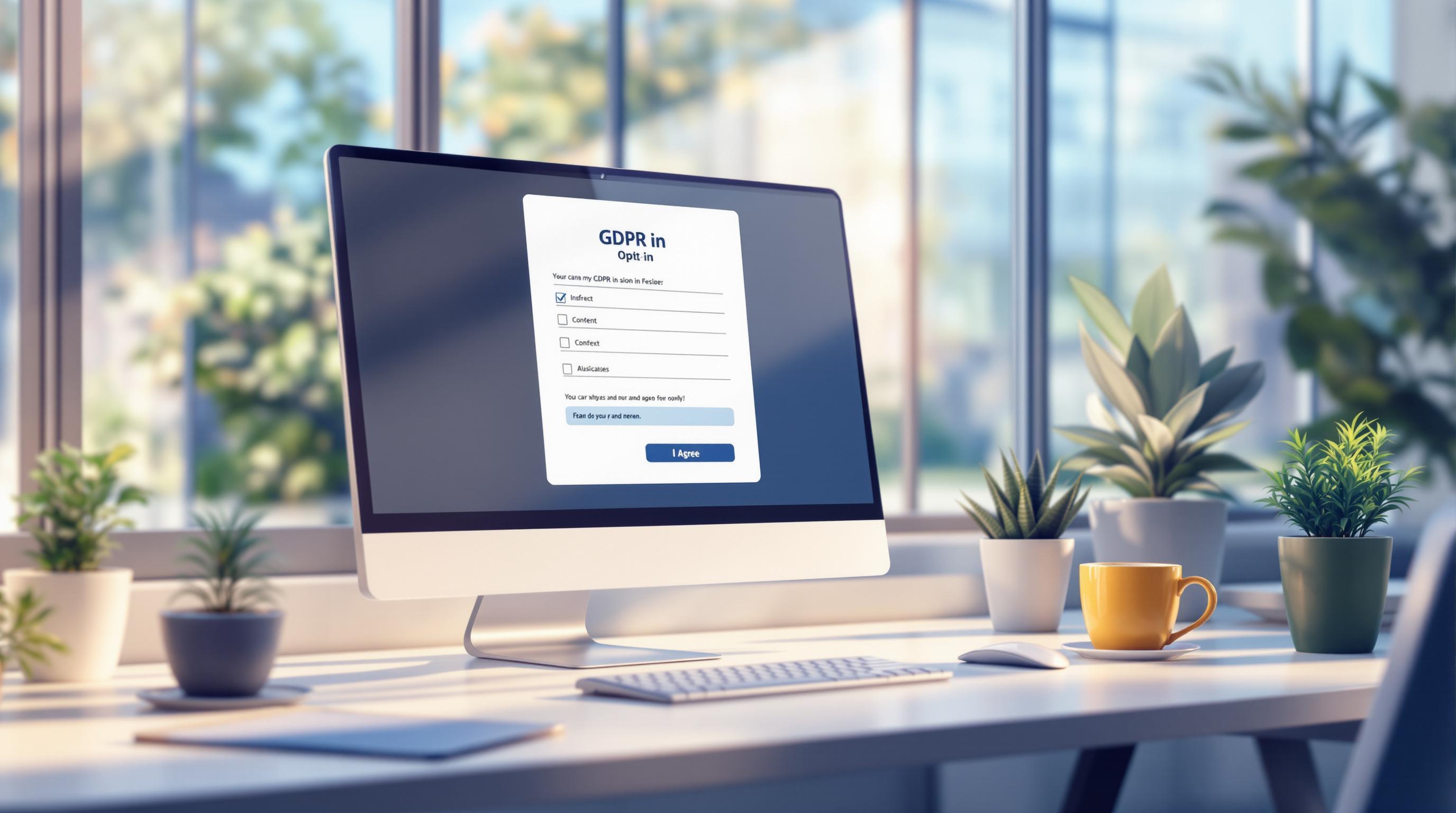: A Quick Guide
Want to grab emails from websites fast? HTML parsing is your secret weapon. Here's what you need to know:
- What it is: HTML parsing turns web code into structured data, making email extraction a breeze
- Why it matters: With 2.4 billion emails sent every second, finding contact info quickly is crucial for marketers and salespeople
- How it works: It scans web pages for email patterns, both in visible text and hidden code
Key tools:
- BeautifulSoup: Great for messy HTML, easy to use
- lxml: Faster, ideal for big projects
- Selectolax: Super fast, perfect for large-scale extraction
Quick tips:
- Use regex to spot email patterns
- Check contact pages, footers, and team sections
- Handle dynamic content with tools like Selenium
- Respect website terms and privacy laws
Related video from YouTube
How HTML Structure Works for Finding Emails
Finding emails in web pages is all about understanding HTML structure. Think of HTML as a big filing cabinet for web content.
The DOM: Your Web Page Map
The Document Object Model (DOM) is like a map of a webpage. It turns HTML into a tree of objects that programs can easily work with. Every part of the page - headings, paragraphs, links - becomes a branch on this tree.
Here are the key parts of the DOM for email hunting:
| Node Type | What It Is | Where You Might Find Emails |
|---|---|---|
| Element Nodes | HTML tags (e.g., <a>, <p>) |
In links or contact sections |
| Text Nodes | Plain text | Within paragraphs |
| Comment Nodes | Hidden HTML comments | Sometimes used to hide emails |
"The DOM connects JavaScript to HTML, letting it work its magic on specific page elements." - Web Dev Pro
Email Hiding Spots
Emails love to hide in predictable places. The most obvious? Inside mailto links:
<a href="mailto:email@example.com">Send Email</a>
Click that, and boom - your email app opens up.
Other common email hangouts:
- Contact forms
- Page footers
- "Contact" or "Info" sections
- Team member listings
- Regular old paragraphs
Here's a pro tip: Can't find an email on the homepage? Check the "Contact Us" page. It's like the lost and found for contact info.
To grab these emails with code, developers use DOM methods like:
getElementById()getElementsByClassName()querySelector()
But watch out! Some websites play hide-and-seek with their emails. They might use tricks like JavaScript puzzles or turn emails into images. That's why knowing your way around the DOM is key for successful email hunting.
Tools You Need for HTML Parsing
To grab emails from web pages, you'll need the right tools. Let's look at the best options for HTML parsing and email extraction.
Main HTML Parsing Tools
BeautifulSoup and lxml are the go-to tools for HTML parsing. BeautifulSoup is great for messy HTML and easy to use. lxml is faster, perfect for handling lots of data.
Here's how they stack up for email extraction:
| Tool | Best For | Performance | Ease of Use |
|---|---|---|---|
| BeautifulSoup | Messy HTML, Simple Projects | OK | Easy |
| lxml | Big Projects, Complex HTML | Fast | Medium |
| Selectolax | Speed-focused Tasks | Super Fast | Easy |
"Selectolax is significantly faster than both lxml and BeautifulSoup, making it ideal for large-scale email extraction projects" - ScrapeOps Team
Getting Started with Parsing
Setting up is pretty simple. Here's a basic setup using BeautifulSoup with lxml:
from bs4 import BeautifulSoup
import requests
from lxml import etree
url = 'https://example.com'
response = requests.get(url)
soup = BeautifulSoup(response.text, 'lxml')
For trickier situations, you might need extra tools. ZenRows helps with anti-bot stuff, while Selenium handles pages with lots of JavaScript. Pick the tool that fits your needs.
When you're dealing with dynamic content, Selenium is your friend:
from selenium import webdriver
driver = webdriver.Chrome()
driver.get(url)
html_content = driver.page_source
soup = BeautifulSoup(html_content, 'lxml')
Some websites try to hide their email addresses. In these cases, you might need to mix and match tools. You could use Requests to load the page, BeautifulSoup to parse it, and regular expressions to find email patterns.
How to Extract Emails
Let's dive into extracting emails from web pages. We'll look at two main methods that work together to find email addresses effectively.
Using Regex to Find Emails
Regex patterns help us spot email addresses in text. Here's a solid regex pattern that catches most email formats:
email_pattern = r"[A-Za-z0-9._%+-]+@[A-Za-z0-9.-]+\.[A-Z|a-z]{2,4}"
This pattern looks for:
- Username: Letters, numbers, and special characters before the @
- Domain: Letters and numbers after the @
- Top-level domain: 2-4 letter endings like .com or .org
Here's how to use it in your code:
import re
from bs4 import BeautifulSoup
def extract_emails(html_content):
emails = set(re.findall(email_pattern, html_content, re.I))
return emails
Searching Through HTML
To find emails in HTML, you need a game plan. Here's where to look:
- Contact pages
- Footer sections
- Team member profiles
- "About us" sections
Check out this example using BeautifulSoup:
def search_html_for_emails(soup):
# Search visible text
text_content = soup.get_text()
visible_emails = extract_emails(text_content)
# Search specific elements
contact_section = soup.find('div', class_='contact')
if contact_section:
contact_emails = extract_emails(str(contact_section))
visible_emails.update(contact_emails)
return visible_emails
"Regular expressions are extremely useful for validating user input and, particularly, for web scraping." - Scrapingdog, Author
For trickier cases where emails are hidden or loaded dynamically, you'll need to combine both methods. The Email Extractor Tool chrome extension does this automatically, using AI to find emails even in dynamic content.
Keep in mind that some websites hide email addresses (like showing "jan***@gmail.com"). In these cases, you'll need extra code to handle partial or protected email addresses.
sbb-itb-8abf799
Dealing with Hard-to-Extract Emails
Websites today use clever tricks to hide email addresses from bots. Let's look at some ways to tackle these challenges.
Finding Emails in Moving Content
Websites that use JavaScript and AJAX to load content dynamically can be a real headache for email extraction. The content changes with each visit, making it tough to grab those emails. But don't worry, we've got some tricks up our sleeve.
One key tool in your arsenal? Headless browsers. They're perfect for scraping content that's loaded by JavaScript. Here's a quick example using Selenium:
from selenium import webdriver
from selenium.webdriver.common.by import By
from selenium.webdriver.chrome.service import Service
from webdriver_manager.chrome import ChromeDriverManager
driver = webdriver.Chrome(service=Service(ChromeDriverManager().install()))
driver.implicitly_wait(10) # Wait for dynamic content
driver.get('https://example.com')
emails = driver.find_elements(By.CLASS_NAME, 'contact-email')
"Web scraping takes trial and error. Inspecting the pages, writing regular expressions, and handling JavaScript can uncover those hidden email contacts." - ProxiesAPI Author
Getting Past Website Blocks
Websites don't make it easy for us. They use all sorts of tricks to stop automated email extraction. But for every lock, there's a key. Here's how to deal with some common roadblocks:
| Challenge | Solution | Implementation |
|---|---|---|
| IP Blocking | Use rotating proxies | Implement proxy rotation every 10-15 requests |
| User-Agent Detection | Randomize browser headers | Set realistic browser headers in requests |
| CAPTCHA Barriers | Use CAPTCHA solving services | Integrate with services like 2captcha or Anti-Captcha |
| Rate Limiting | Add random delays | Space requests 3-7 seconds apart |
For those extra tricky websites, try these advanced moves:
- Keep an eye on AJAX requests using browser developer tools. It'll help you figure out how emails are loaded.
- Add referrer headers to your requests. It makes your traffic look more legit.
- Watch out for honeypot traps. Check for CSS properties like "display: none".
Want an easier way? The Email Extractor Tool chrome extension handles all this stuff automatically. It uses AI to adapt to different website protection methods, all while staying on the right side of scraping ethics.
Making Email Extraction Automatic
Let's talk about how to make email extraction a breeze with automation. We'll look at some cool tools and scripts that do the heavy lifting for you.
Email Extractor Tool - Extract Emails with AI Automation
There's this nifty Chrome extension called Email Extractor Tool. It uses AI to find and grab emails from web pages automatically. Whether you need 5,000 or 1,000,000 emails a month, it's got you covered. No more copying and pasting - it exports everything to CSV for you.
Here's what it can do:
| Feature | What It Does | How It Works |
|---|---|---|
| AI Detection | Spots emails with 95% accuracy | Finds valid email patterns automatically |
| Bulk Processing | Handles up to 1M emails monthly | Works on multiple pages at once |
| Export Options | Downloads as CSV/TXT | Plays nice with your CRM |
| Automation | Scans on a schedule | Runs while you browse |
Processing Multiple Pages
Want to handle lots of pages at once? Python's got your back. Check out this script using the requests-html library:
from requests_html import HTMLSession
session = HTMLSession()
def extract_emails_from_pages(urls):
for url in urls:
r = session.get(url)
r.html.render() # Handles JavaScript-loaded content
emails = r.html.find('a[href^="mailto:"]')
for email in emails:
print(email.attrs['href'].replace('mailto:', ''))
"By combining web scraping and email sending functionalities, this Python automation script demonstrates the power of streamlining repetitive tasks." - ScrapingBee Team
When you're dealing with multiple pages, keep these tips in mind:
- Use rotating proxies to avoid getting blocked
- Wait 3-7 seconds between requests to be nice to servers
- Check emails as you go to keep your data clean
- Save your results right away so you don't lose anything
Tools like Swordfish AI are pretty impressive. They get it right 82% of the time on the first try and are 95% accurate overall. That's why automated extraction is a solid choice for businesses looking to build good contact lists.
Rules and Good Practices
Extracting emails through HTML parsing? You need to play by the rules. Let's dive into the dos and don'ts of email extraction.
Legal Rules: Don't Mess This Up
The CAN-SPAM Act is no joke. Break it, and you could be shelling out $51,744 per email. Yikes! Here's what you NEED to know:
1. Get Permission
Don't just add people to your list. Ask first!
2. Be Honest
Use real info in your headers and sender details. No funny business.
3. Show Your Face
Include your physical address in emails. Let people know you're legit.
4. Let Them Leave
Make it easy to unsubscribe. And when they do, respect it within 10 days.
"The law makes clear that even if you hire another company to handle your email marketing, you can't contract away your legal responsibility to comply with the law." - Federal Trade Commission
But wait, there's more! Web scraping legality depends on each website's rules. And with Project Honey Pot watching over 490 million spam traps, you better play nice.
Boost Your Results (Without Breaking Rules)
Want top-notch email extraction that won't land you in hot water? Try these:
Check Those Emails
Catch typos and duds before they hit your list. Different email providers have different rules:
| Provider | When Emails Go Poof |
|---|---|
| Gmail | 2 years |
| Outlook | 1 year |
| Yahoo | 1 year |
| AOL | 1 year |
Tech Tricks
- Don't rush it. Space out your requests.
- Check the robots.txt file. It's like the website's rulebook.
- Use proper headers and mix up your IPs. Stay under the radar.
"By following ethical principles and understanding legal regulations, individuals and businesses can engage in ethical web scraping." - ForageAI
Summary
HTML parsing for email extraction isn't a walk in the park. It needs smart planning and the right tools. Beautiful Soup and Scrapy? They're top-notch for static and big-scale scraping. But for dynamic websites, Puppeteer and Selenium take the cake.
Here's the deal with extracting emails: quality trumps quantity. Mailparser crunched the numbers on over 134 million parsed emails. The verdict? Targeted extraction beats broad scraping hands down. Want to up your game? Tools like Hunter and Snov.io come with built-in verification. That's a win for accuracy.
"Email scraping is not just about gathering as many emails as possible. It's about collecting the right data in the right way." - DataHen
Let's break it down:
| What to Focus On | How to Nail It |
|---|---|
| Tools | Go for specialized libraries (Beautiful Soup, Scrapy) |
| Verification | Don't skip email validation checks |
| Compliance | Stick to CAN-SPAM Act and GDPR rules |
| Automation | Space out your requests, respect robots.txt |
Looking for a hands-off approach? AI-powered tools can do the heavy lifting while keeping you on the right side of the law. But here's the golden rule: balance efficiency with ethics. Always, ALWAYS prioritize permission-based collection and keep your data clean.
Whether you're coding your own scripts or using off-the-shelf solutions, winning at email extraction boils down to three things:
- Getting HTML structure
- Following the law
- Nailing your verification methods
Your north star? Generate quality leads that fit your target audience like a glove. That's how you play the long game in email extraction.



